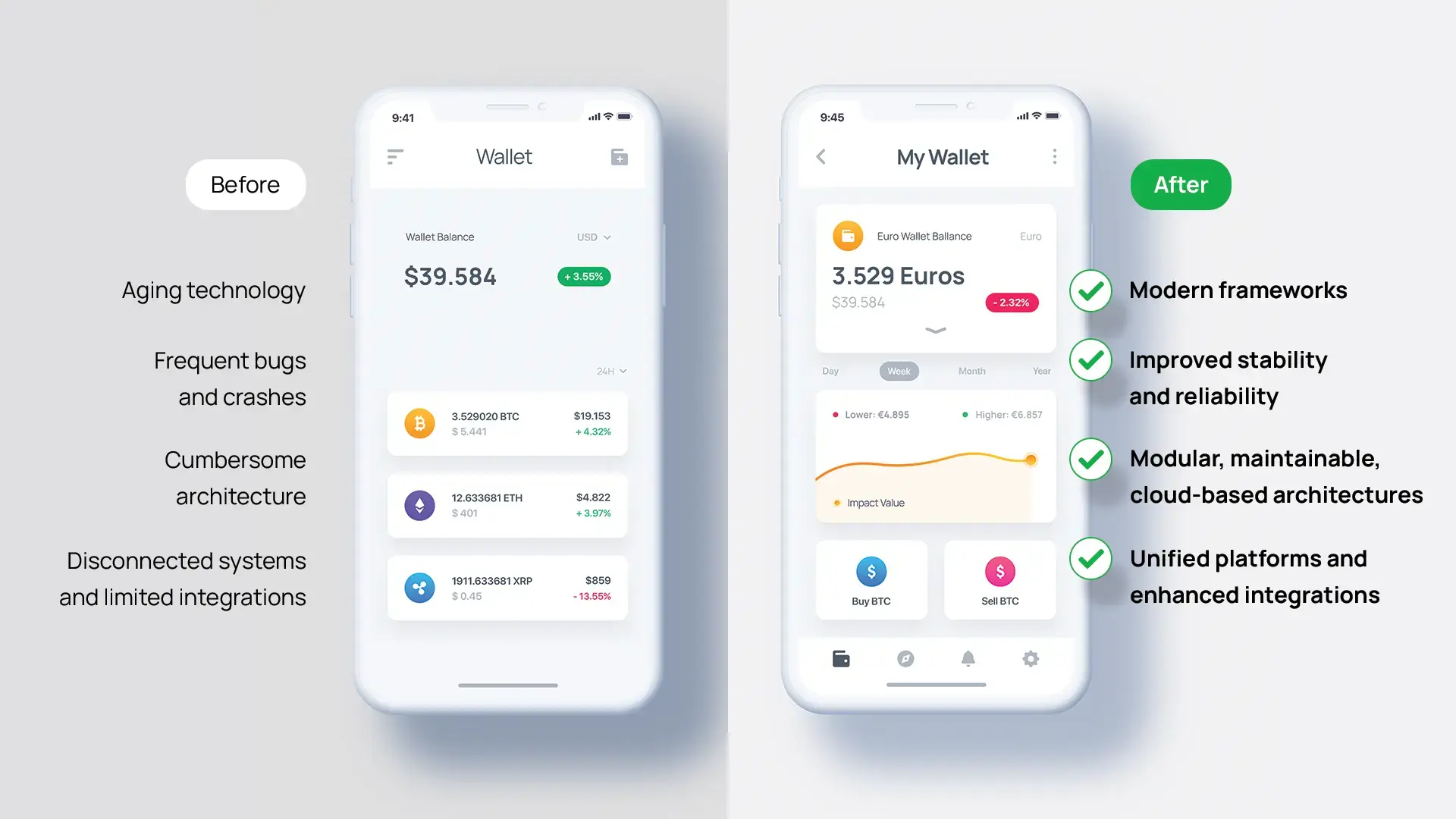The European Accessibility Act (EAA), officially titled Directive (EU) 2019/882, introduces a unified legal framework aimed at improving accessibility for people with disabilities across the European Union. Its goal is simple but far-reaching, and that is to make sure that essential products and services can be used, understood, and accessed by everyone, regardless of ability.
The applicable accessibility requirements apply equally to economic operators from the public and private sectors. These accessibility standards require products and digital services to be accessible by design and function to all users, irrespective of their sensory, cognitive, or physical abilities. In a landscape where 1 in 5 Europeans (87 million) suffer from such impairments, the EU Accessibility Act aims to set a new benchmark for how inclusively technology must be built and delivered across Europe.
This includes individuals with visual impairments, hearing loss, reduced mobility, neurodivergent conditions, and other forms of disability that affect how they interact with digital interfaces or physical devices.
Who Is Affected by the European Accessibility Act (EAA)? Products and Services Covered

The EAA applies to companies that offer certain types of products or services in the European Union. This includes both EU-based and non-EU companies that sell into the EU market. It applies to a defined list of products and services that are used widely in daily life and carry significant value for consumers.
Products affected
- Computers and operating systems
- Smartphones, tablets, and e-readers
- Payment terminals
- Self-service terminals (ATMs, ticket machines, check-in kiosks)
- Digital television services and related hardware (TV sticks, game consoles)
Services affected
- E-commerce platforms and apps
- Online banking and fintech apps
- Telecommunications services (including VoIP, SMS, email, chat)
- Transport ticketing platforms (websites, mobile apps, kiosks)
- Audiovisual media access services and electronic program guides
- E-books and e-book reading software
Where Does the European Accessibility Act Apply?
Across all sectors, compliance will affect how businesses operate, as it involves making sure that everyone can access essential services and products, whether through selecting a product, making a payment, contacting support, or downloading a statement. Essentially, users should be able to complete an action without relying on a single sensory mode or inaccessible component
If your business adheres to these changes early, it can avoid major retrofitting efforts, meet legal obligations, and build user-friendly digital ecosystems. Let's explore some of the most prominent industries affected by the accessibility laws:
e-Commerce and SaaS.webp?width=5342&height=3561&name=pexels-asphotograpy-230544%20(1).webp)
Source
For instance, an e-commerce platform selling consumer goods must provide users with clear navigation paths, properly labeled product images, and accessible payment and confirmation flows via each stage of the online sales journey. A SaaS platform must ensure that dashboard interactions, user notifications, and reporting tools are compatible with screen readers and keyboard navigation.
Fintech & Banking Services & Financial Services
.webp?width=2000&height=1154&name=fintech%20(1).webp) A consumer banking platform should allow users with low vision to navigate and read account statements using screen readers, while also making sure voice input is supported for transaction searches or setting preferences through speech recognition software.
A consumer banking platform should allow users with low vision to navigate and read account statements using screen readers, while also making sure voice input is supported for transaction searches or setting preferences through speech recognition software.
Banking and fintech apps, such as neobanks or crypto, trading, or personal finance management apps, must implement scalable font sizes, make sure that color is not the only visual indicator of key data (e.g., profit/loss), and provide clear text descriptions for graphs and widgets to address any accessibility issues.
Telecommunications
For example, telecommunications providers offering customer account access through digital portals must make sure their billing pages, usage dashboards, and support channels are usable by users relying on assistive technology and easy to engage with on TV equipment (thus interlapping with the EAA responsibilities of electronic communication providers, who must also comply). Likewise, a bus or rail transport operator’s mobile app must include accessible real-time updates, clear routes and schedules, and allow bookings via voice or text input via the web and mobile phones.
The Business Benefits of Adopting EAA's Accessibility Requirements
We’ve seen it time and time again: when teams start designing with accessibility in mind, everyone wins. Companies benefit from faster sites, clearer content, and improved conversion rates, while users have an easier time navigating through web pages and taking desired actions. Accessibility shouldn't be seen as a legal checkbox, because it isn't. Web content accessibility guidelines are here to show us how we can build better products and services for everyone.
Alex Axon
Chief Experience Officer, Zitec
While the European Accessibility Act introduces legal obligations, it also presents a strategic opportunity. Organizations that approach digital accessibility proactively often see tangible and measurable benefits that extend far beyond compliance when they offer more accessible products to their consumers.
Expanded Market Reach
Roughly 15–20% of the EU population lives with some form of disability, approximately 87 million people. When digital products and services become more accessible, businesses expand their potential user base. This is especially relevant for sectors like e-commerce, banking, public services, telecommunications, and logistics, where digital engagement is constant and accessibility features can make or break conversions and website abandonment rates.
Better User Experience for Everyone

Accessibility improvements through UX/UI enhancements, like simplified navigation, clear language, or well-structured content, benefit all users, not just those with disabilities. Interfaces become easier to understand, faster to use, and more enjoyable to navigate. Users stay longer, make fewer mistakes, and are more likely to return.
Stronger SEO and Digital Performance
Accessible websites typically follow better HTML semantics, provide richer alt text, and load faster. These are all factors that contribute to better search engine rankings. Structured content, logical heading levels, and accessible multimedia make platforms more discoverable and usable across devices. Improved accessibility can also reduce bounce rates and abandonment during key user flows.
Scalable, Future-Proof Platforms
By embedding accessibility into core development practices, organizations avoid costly retrofitting later. Standards like WCAG 2.1 and EN 301 549 help future-proof platforms, ensuring compatibility with evolving assistive technologies and regulatory frameworks.
Stronger Brand Reputation and Trust
Demonstrating a commitment to inclusion sends a powerful message. It shows respect for all users, aligns with sustainability and ESG goals, and builds trust with customers, partners, and regulators. In competitive industries like finance, health, and tech, inclusive platforms become a mark of leadership.
Reduced Risk and Legal Certainty
.webp?width=5824&height=3264&name=businessman-analyzing-risk-laptop%20(1).webp)
Compliance with the EAA helps organizations avoid enforcement actions, fines, or reputational damage. Meeting accessibility requirements also reduces the risk of user complaints, lawsuits, or regulatory investigations, especially when operating across multiple EU countries.
What Accessibility Means in Practice – Accessibility Requirements and EAA Compliance
The EAA accessibility requirements do not provide an abstract definition of accessibility. Instead, they outline functional requirements that make sure products and services can be used by people with various disabilities, including those affecting vision, hearing, mobility, speech, and cognition, as per the Web Content Accessibility Guidelines (WCAG) 2.1 Level AA.
To meet EAA standards, digital products and services must be:
- Perceivable – Content must be presented in ways people can perceive. For example, images need to have alt text, and videos must include captions.
- Operable – Users must be able to navigate and use interfaces using different input methods, such as keyboard navigation or screen readers.

- Understandable –Text, links, forms, and navigation should be clear, consistent, and easy to follow.
- Robust – Systems must work seamlessly with assistive technologies, such as screen readers or magnifiers, and continue to do so as audio, visual, media services and technologies evolve.

For companies designing digital products, the European standard EN 301 549 provides technical guidance. This standard is not optional. It is how compliance is measured.
Compliance requires auditing all content and components:
- login forms
- shopping carts
- chat bots
- video players
- dashboards
- support centers
User authentication processes must be redesigned to support biometrics or multi-modal input, not only CAPTCHAs or click-based verification tools. Notifications, confirmations, and error messages should not rely solely on color or animation. Tooltips, charts, alerts, and even cookie banners must be perceivable and dismissible via keyboard.
All of this should be implemented at the code level, tested with assistive technologies, and included in QA processes as a permanent fixture, as per national and international regulations.
Documentation, Certification, and Penalties for Non-Compliance with Accessibility Standards
From June 2025, economic operators must demonstrate compliance through technical documentation, conformity assessments, and declarations of conformity. For many physical products, this includes CE marking. The documentation must cover how accessibility requirements have been met and should be made available to the relevant market surveillance authorities upon request.
Companies must also ensure make sure customer-facing materials, such as:
- User manuals
- Installation guides
- Terms and conditions
- Customer service channels
- Virtually any product labeling
...are all accessible. For digital services, this means all contracts and policies presented through a website or mobile app must follow WCAG 2.1 standards.
Violations of the EAA will be handled by the national authorities in each EU Member State. Penalties will vary, but under the directive they must be effective, proportionate, and dissuasive. In practice, this could mean product bans, enforced recalls, financial penalties, or public warnings. Member States also allow third parties, such as consumer rights groups or competitors, to raise formal complaints.
Exemptions and Special Cases
The EAA provides for a limited number of exemptions:
- Microenterprises (fewer than 10 employees and less than €2 million annual turnover) are exempt from service-related requirements, though not necessarily from product compliance.
- A business may apply for an exemption if full compliance would fundamentally alter the nature of the product or service.
- An exemption can also be granted if compliance would impose a disproportionate financial burden, as assessed by a formal cost-benefit analysis.
These exemptions must be carefully documented, justified, and in some cases submitted to authorities. Companies cannot self-certify out of scope without clear evidence and legal review.
Pro tips for implementation teams to ensure compliance and functionality
Digital teams should integrate accessibility into development lifecycles. Start by testing interfaces with popular screen readers, and use open-source tools to catch common issues. Avoid overlays that claim instant compliance, as they often cause more harm than good.
- For example, when redesigning a logistics tracking dashboard, structure data in logical tables, use keyboard shortcuts for actions like filtering or downloading reports, and include ARIA roles to help users identify table headers and controls.
- On e-commerce services and retail sites, make sure every product variation (size, color, quantity) can be selected without a mouse. Checkout pages must clearly indicate form field errors and give users time extensions where required.
- Banking, payment services, and financial apps should use sufficient color contrast in graphs and financial data, support reflow on smaller screens, and provide text-based alternatives to interactive charts. Where investment data is time-sensitive, real-time alerts must be conveyed in both visual and audible formats for users relying on assistive tech.
- Public sector platforms must make sure that all form fields are properly labeled, status updates are available for screen readers, and documents like PDFs or downloadable certificates are accessible or available in alternative formats.
What if you could get everything under one roof? At Zitec, we’ve got the in-house expertise to make your website fully compliant, accessible, intuitive, and SEO-friendly.
Digital Accessibility is More than Compliance
There are millions of people in the EU living with some form of disability. In fact, businesses risk losing out on the £274 billion spending power of UK households with disabled members. In 2019, 69% of disabled users (4.3 million people) left websites due to accessibility barriers. This leads to a serious revenue gap. Accessibility is a human right and a market opportunity.
Accessible websites improve SEO, page speed, and user engagement metrics. They also reduce abandonment rates and support better conversion funnels.
What’s more, better accessibility can reduce customer support costs by improving the clarity and self-service of offerings.
- Users with dyslexia will benefit from simpler sentence structures, clear headings, and well-spaced content, which in turn helps non-disabled users scan and digest information faster.
- Voice-control users on mobile devices often benefit from the same structure that supports keyboard-only navigation.
- Users with visual impairments rely on screen readers to understand what a form field is asking for (e.g., "email address" or "phone number"). But this also helps anyone using autofill tools or navigating with voice input, because the labels make interaction more predictable and seamless.
- Users with mobility impairments or neurodivergent conditions may appreciate ditching timeouts on forms, as they need more time to complete a task.
Where to Begin?
Businesses that want to adhere to national regulations and accessibility standards should take a proactive approach and start assessing whether their digital estate falls within scope and where current gaps lie. This includes areas such as, but not limited to:
- Reviewing all user-facing services, including websites, mobile apps, kiosks, and third-party integrations.
- Checking documentation, training materials, contracts, and T&Cs for readability and screen reader support against accessibility measures.
- Running audits using standards like WCAG 2.1 and EN 301 549, and documenting remediations.
- Creating accessibility roadmaps aligned with product cycles.
- Establishing accessibility statements, accessibility training, and feedback channels to grow accessibility expertise and awareness from within.
Build a Stronger Business While Complying with the EAA Today
Preparing for EAA compliance involves several areas of change, including retrofitting a website and implementing new processes and procedures such as:
- Modifying UX/UI
- Rethinking marketing operations (especially in SEO)
- Absorbing the cultural shift and continuously sustaining accessibility across all processes
Turn accessibility into a driver of innovation, not a barrier.
For more information, see the source documents used in the creation of this guide:
.webp)






